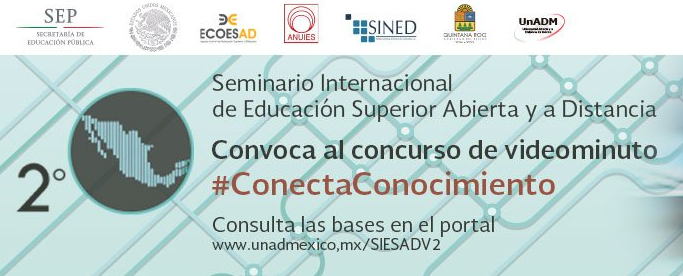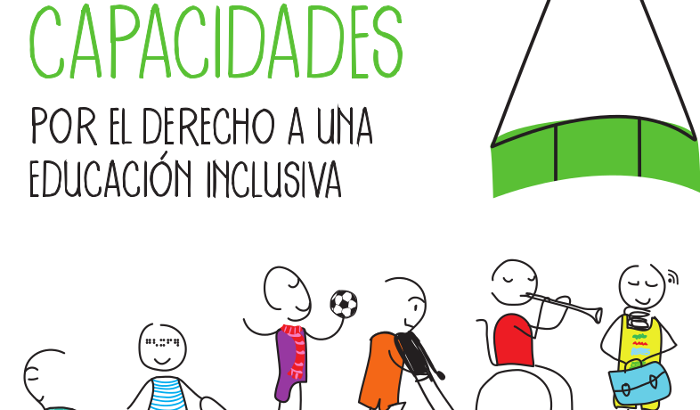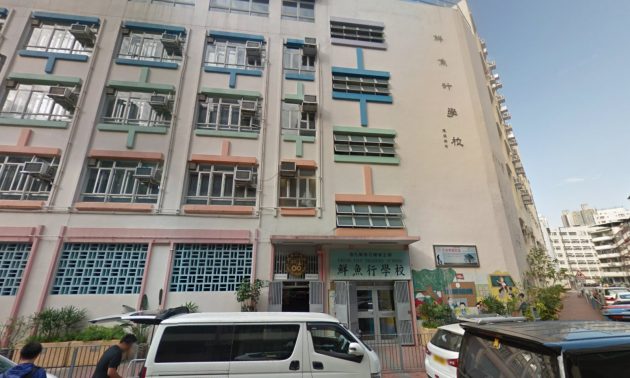América del Norte/EEUU/edweek.org
Resumen: la noticia hace referencia a los esfuerzos de la Ciudad de Nueva York para convertir a decenas de escuelas de bajo rendimiento en modelos educativos exitosos, inyectándoles una gama de servicios de salud, y de apoyo social y emocional para estudiantes y las familias de los estudiantes. Casi tres años después del inicio del programa, los resultados de la escuela PS 123, con sus 530 estudiantes, ofrecen una pequeña ventana a lo que la iniciativa más grande de la ciudad está viendo: un aumento en la asistencia estudiantil y la participación de la familia en las actividades escolares, una caída en el ausentismo crónico, Progreso. «Eso no es una gran cosa para nadie, pero, en realidad, eso es enorme cuando se trabaja con la demografía con la que trabajamos», dijo Hernández.
P.S. 123, a K-8 school in Harlem, had been a chaotic place when Melitina Hernandez arrived as principal in 2013. Students would often run out of class to get attention. Staff members sometimes dodged confrontational parents. The school had old computers and tattered textbooks.
So Hernandez and her staff set out to make big changes with a $4 million grant from the state. They started with upgrading technology and other classroom amenities. They also turned their attention to the needs of the school’s large population of homeless children. Then their efforts kicked into higher gear in 2014 when P.S. 123 became part of New York City’s broad efforts to turn around dozens of low-performing schools by injecting them with a range of health, social-emotional, and academic support services for students and their families.
Nearly three years later, the results at P.S. 123, with its 530 students, offer a small window into what the city’s larger initiative is seeing: an increase in student attendance and family participation in school activities, a drop in chronic absenteeism, but uneven academic progress. Just 17 percent of P.S. 123’s students in grades 3-8 were proficient on the state’s English Language Arts exam in 2016, but in 2015, it had been even lower at 7 percent.
«That’s not a big thing to anyone else, but, in actuality, that’s huge when you work with the demographics that we work with,» Hernandez said.
Flooding impoverished schools with a range of services and resources is not new, and there’s still lively debate in education circles about whether it’s something schools should take on.
Commonly referred to as «community schools» or «whole-child» initiatives, the approach has been used in districts from Tacoma, Wash., to Cincinnati for several years, but the movement has picked up steam more recently amid a backlash against single-measure, test-based accountability and as an alternative to closing long-struggling schools. It’s gotten robust support from the nation’s teachers’ unions. And some states are looking to incorporate the features of community schools in their plans required by the new federal education law, the Every Student Succeeds Act.

Students at P.S. 188 help clean up their classroom before the last day of the official semester in New York City public schools. The school provides an on-site nurse practitioner, mental health counseling, and other services meant to make it a hub of the community.
—Mark Abramson for Education Week.
Pennsylvania, for example, intends to allow districts to use a community schools approach to tackle the problem of chronic absenteeism, to increase the roles that parents play in schools, to address students’ social and emotional needs, and to provide more after-school opportunities, said Pedro Rivera, the state’s education secretary.
«We know that in today’s society, our children … regardless of class, come to our institutions with various needs,» Rivera said. «When properly implemented and supported, community schools will again allow schools to be the nucleus or the hub of their communities.»
Whether community schools initiatives will continue to gather momentum is unclear. President Donald Trump’s proposed federal budget threatens to slash several funding streams that districts, communities, and nonprofit partners use to fund community schools and whole-child initiatives. And the research on whether a community schools strategy is an effective way to increase student achievement paints a complicated, sometimes contradictory, picture.
Benefits for Attendance
An independent study released earlier this year on the Communities in Schools program, one of the country’s largest whole-child initiatives that focuses on dropout prevention, found that while on-time graduation rates rose and the numbers of dropouts decreased in schools with the program, comparison schools also saw their graduation rates go up.
Attendance was higher in elementary schools in the program than in a comparison group of schools, according to the study by MDRC which looked at select schools in Texas and North Carolina.
Test scores improved at both Communities in Schools sites and the comparison schools at the elementary and high school levels. But at the middle school level, state test scores did not improve at those sites, although they did at the comparison schools.
But Linda Darling-Hammond, a longtime education scholar and president of the left-leaning Learning Policy Institute, said there is evidence that the strategy can be used to improve schools. What matters, more often than not, is the implementation, she said.
Schools that use the approach successfully, Darling-Hammond said, know the specific needs of their community and tailor services to meet those and forge strong relationships with families and communities.
In a recent report by the National Education Policy Center and the Learning Policy Institute, researchers analyzed more than 125 studies and research reviews on community schools, and found test score gains showed up in years three, four, and five. In the shorter term, researchers saw improvement in students’ health, attentiveness, and behavior, Darling-Hammond said.
«Whenever you do major structural reforms, if you are successful, the first thing that will respond is attendance,» she said. «And then you will see increases in kids … coming to school, staying in school, graduating, which actually has a much bigger effect on their later life outcomes than test scores.»
Though addressing the needs that poor students face outside of school is important, improving the quality of instruction is the most essential part of making schools better, said Paul Reville, who runs the Education Redesign Lab at the Harvard Graduate School of Education.
«I’d hate to see [community schools] undermined by having unrealistic expectations of it being a short-term silver bullet to bringing about success in these schools,» Reville said. «It’s one piece of a comprehensive strategy for turning around chronically underperforming schools.»
Massive Effort Aimed at Struggling Schools
In New York City, schools like P.S. 123 are in a special category of community schools—a multi-million dollar initiative called «renewal schools» aimed at staving off a state takeover or shutdown of campuses that had lagged academically for years.
Buoyed by some of the results in the wider community schools’ program, Mayor Bill de Blasio announced in May that he will expand the number of participating schools in the fall to 215 , increasing the scale of the program to one previously unseen in the country. The schools will serve about 100,000 students, far bigger than most school districts in the United States. But critics say de Blasio’s embrace of the community schools approach is troubling, since the academic improvements have been modest at best.

Students at P.S. 188 in New York socialize on the playground during the last week of school.
—Mark Abramson for Education Week.
English/language arts and math proficiency rates rose by 5.7 percent and 1.8 percent, respectively, from the 2014-15 school year to the 2015-16 school year, according to city data. Graduation rates for students in community schools averaged a 4.7 percent increase year over year. Chronic absenteeism declined by 3.5 percent in community schools, compared to a little over 1 percent citywide.
«We are targeting really high-need schools that are in neighborhoods with entrenched poverty, so the numbers are not where we want them to be. But we have been pleased with the growth early on,» said Chris Caruso, the executive director of New York City’s community schools program. «A lot of this is about changing culture.»
New York City Chancellor Carmen Fariña stressed that community schools are one of many strategies the district is using to improve schools, and that they offer parents, students, and teachers key advantages. GED and English-as-a-second-language classes for adults help parents participate in their children’s education. The schools provide mental health counselors and other staff from community-based organizations, which frees up teachers and principals to focus on instruction, she said.
A major benefit, Fariña said, are the experiences community schools bring to low-income children that are typical in middle- and upper-income communities. Playing chess, raising chickens, and learning to code, to name a few.
«You don’t ever give up on any community and any child, and this is what we are doing,» she said. «You have to serve the whole child, we are talking about social, emotional, academic learning–what we call the three pillars of education.»
Still, in the city’s renewal schools—where the challenges are even greater and the resources have been more robust—results so far from the community schools initiative show modest, but promising signs. In renewal high schools, the graduation rate jumped on average nearly five points in 2016, to 59 percent. But, that still lagged the city average of 73 percent.
Graduation rates at renewal high schools did not increase more than at comparable high schools, and test scores did not show statistically significant gains compared to select non-renewal schools that did not get extra city resources, according to Aaron Pallas, a professor at Teachers College, Columbia University, who recently analyzed city education data.
But city education officials have called Pallas’s analysis «flawed,» arguing, in part, that renewal schools were chosen based on strict selection criteria that did not match the criteria used in his analysis.
One pro-charter group that has been highly critical of de Blasio’s education agenda—Families for Excellent Schools—thinks a smarter approach would be to shut down the renewal schools and give students the option to attend high-performing schools, including charters.
Others argue that until the city does something dramatic to break up schools with high concentrations of poverty, there won’t be any major academic breakthroughs.
Zeroing In on Chronically Absent Students
While the city’s community schools use a wide variety of strategies to address each school’s and neighborhood’s needs, they all rely on an on-site director as a key ally to principals and the main connection to outside partners. At P.S. 123, Hernandez points to two people who are essential to her school’s program: Jeanine Lascelles, the community school director, and Raymond Blanchard, the mental health clinician.
Lascelles oversees a team of 10, including six «success mentors,» who work directly with 112 students who were chronically absent. The mentors are frontline advocates for homeless students, who may need extra tutoring, an extension to finish an assignment, or more basic supports. The mentors conduct daily check-ins to ensure that students show up to class and make home visits to families. They also meet weekly with the liaison at the shelter in the neighborhood. And when students improve, mentors notify parents through «celebration calls,» Lascelles said.
Their efforts are paying off. About 85 percent of the students who were part of that targeted effort improved attendance over the past year, Lascelles said.
Blanchard, along with other staff members, provide counseling to students and their families, and training for teachers to better recognize signs that misbehaving students need counseling services. They are also trained on de-escalation techniques and other ways to support students, including knowing when a child may just need to take a walk or require additional counseling.
«The learning is 100 percent important, but it’s hard for the students to learn if they are coming in worrying about where they are going to sleep, what they are going to eat, different things like that,» Blanchard said. «It’s providing them support on that emotional level so that they can come in express themselves, let that information out, and then be able to go into the classroom and continue with their day, to continue with learning.»
Fuente: http://www.edweek.org/ew/articles/2017/06/07/when-a-community-loses-its-schools.html
















 Users Today : 2
Users Today : 2 Total Users : 35460385
Total Users : 35460385 Views Today : 3
Views Today : 3 Total views : 3419166
Total views : 3419166